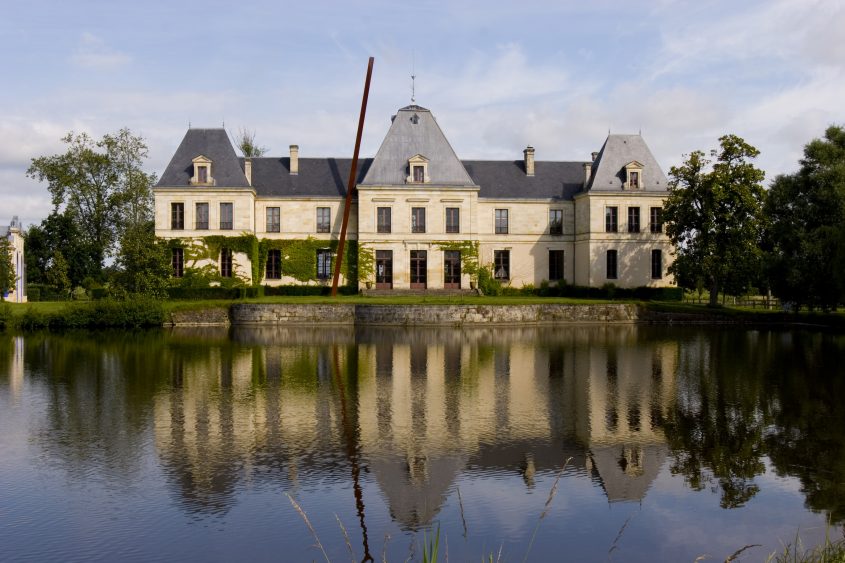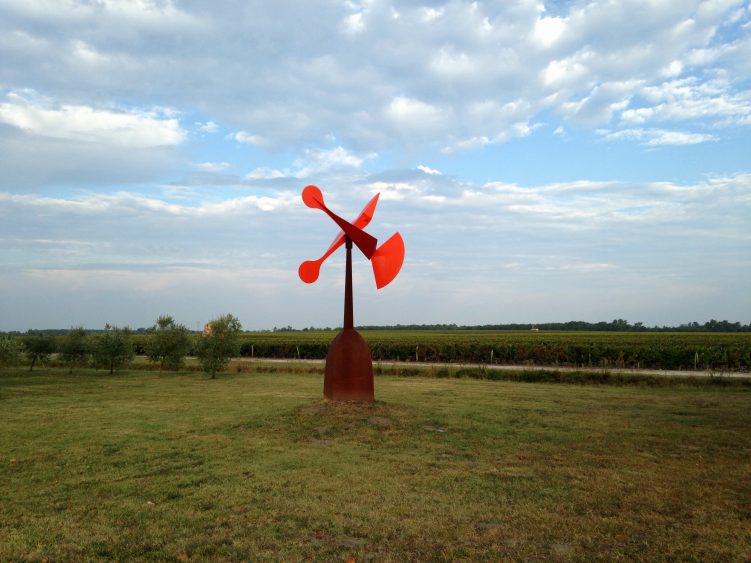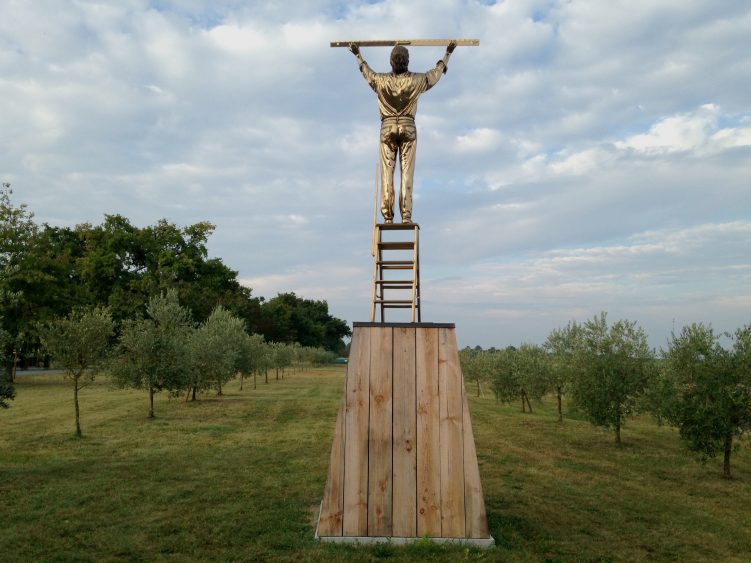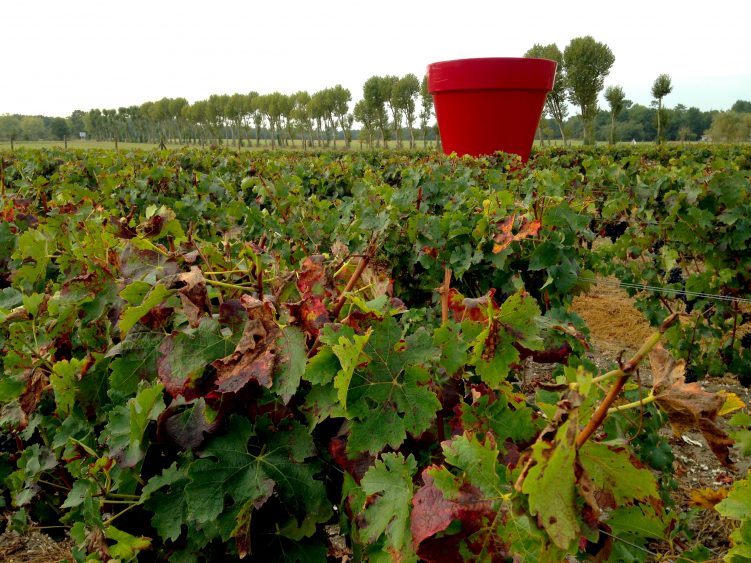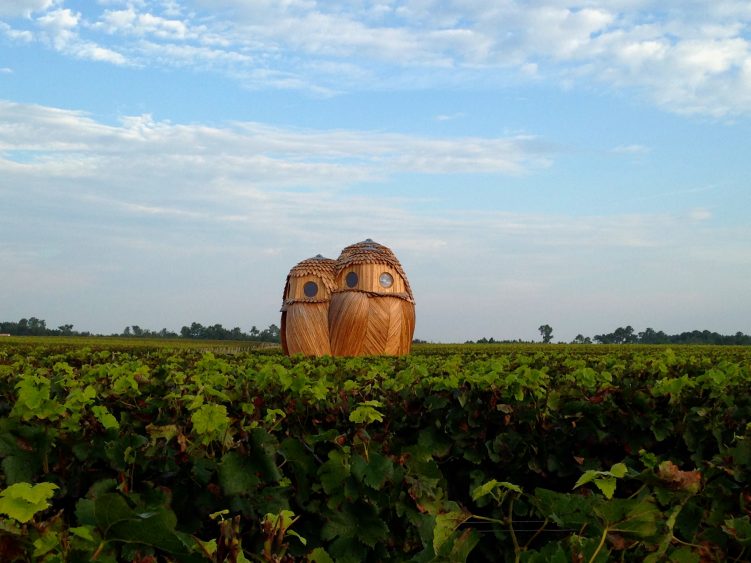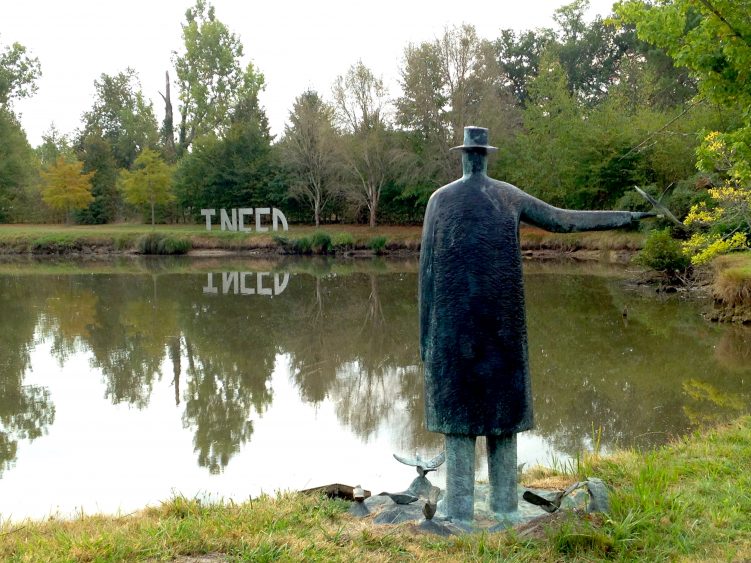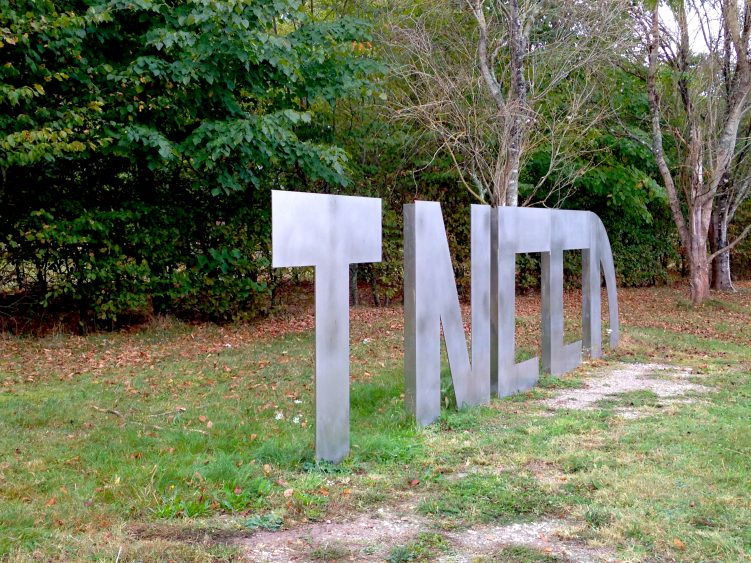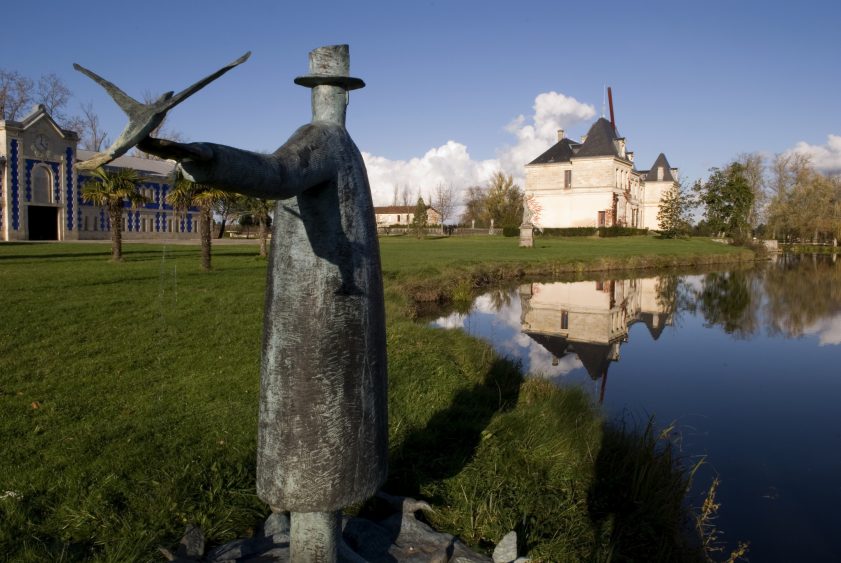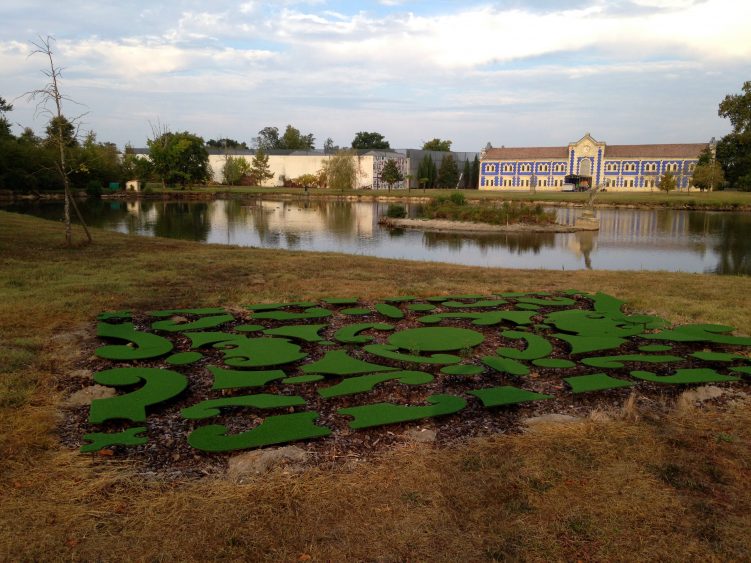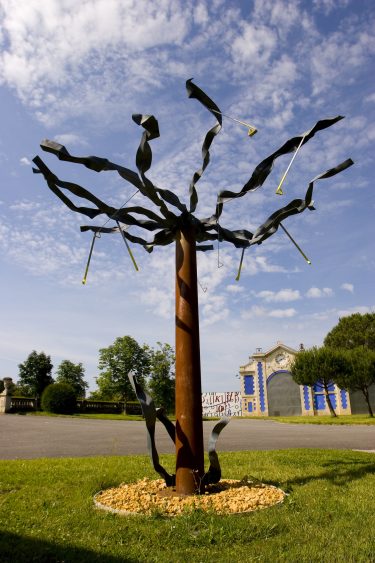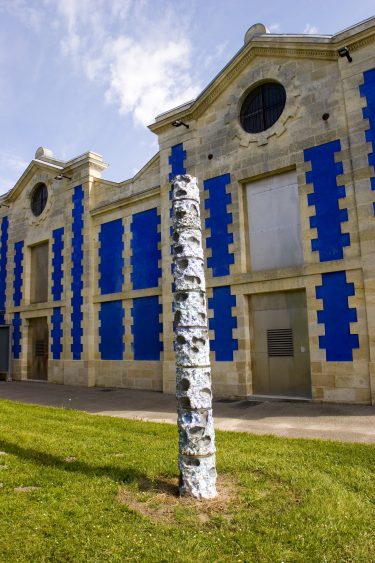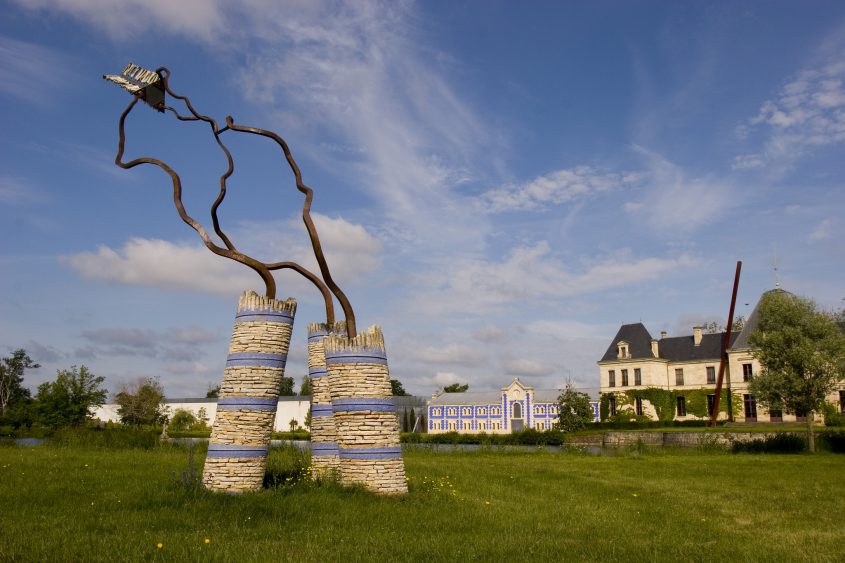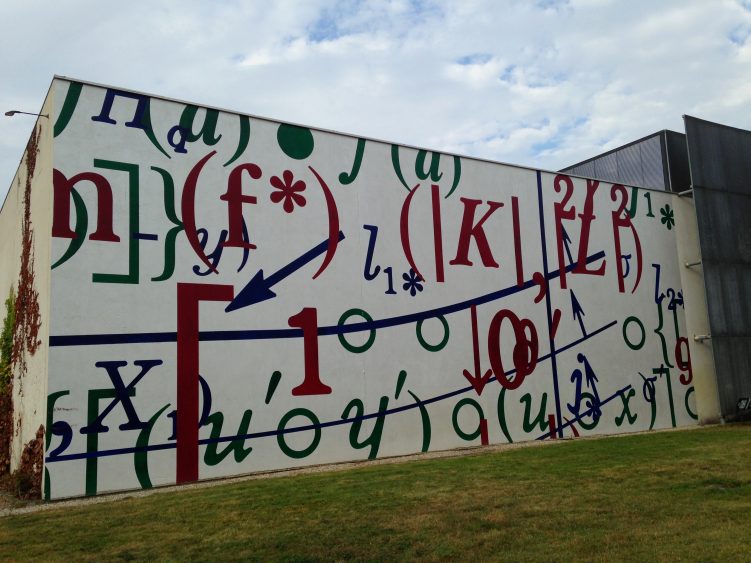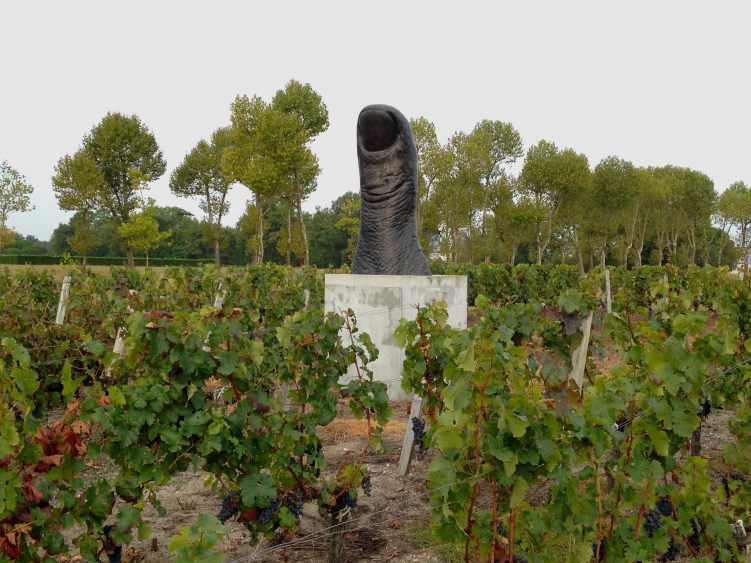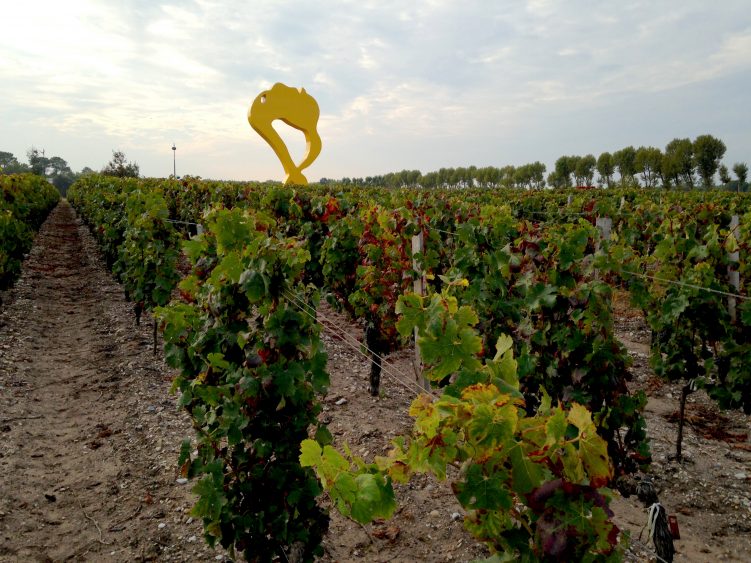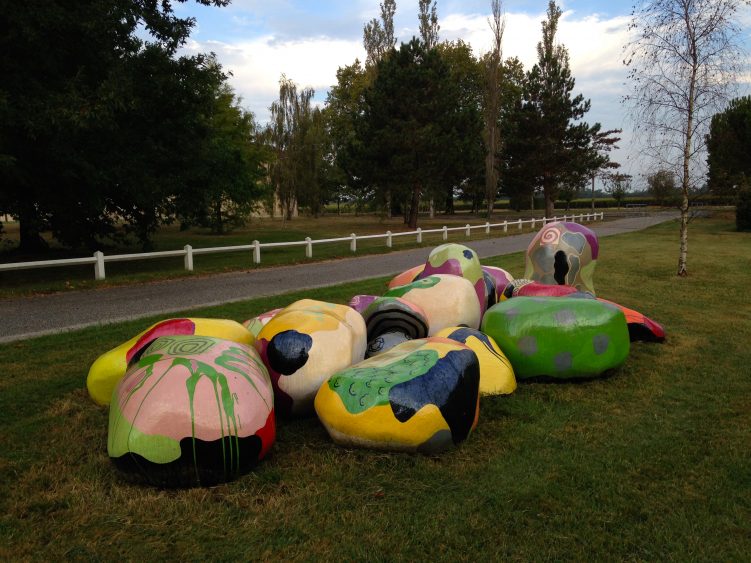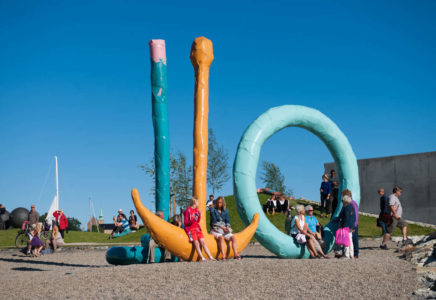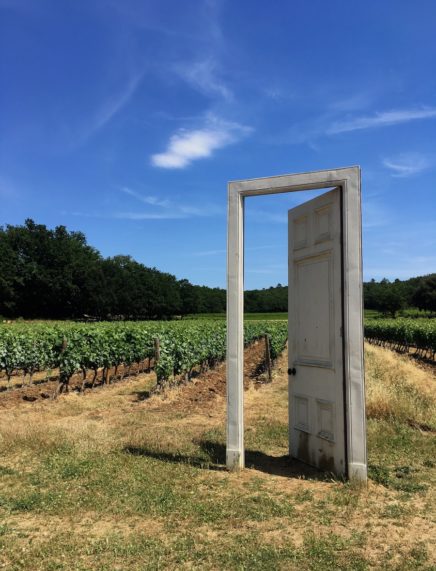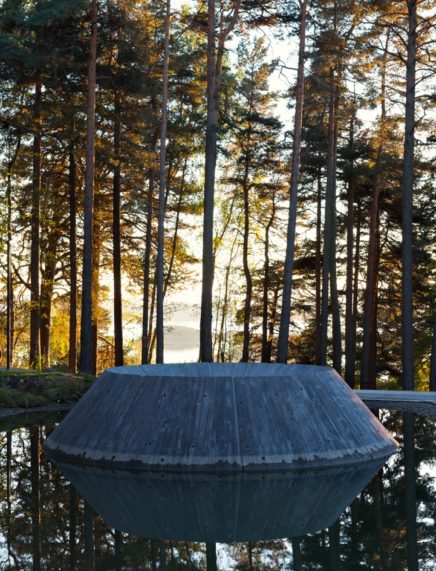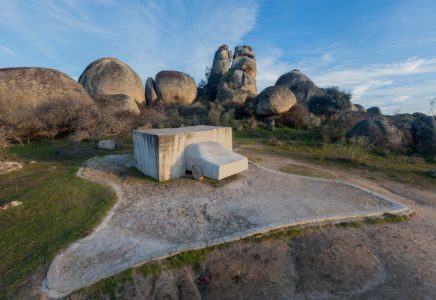The Château d’Arsac and its sculpture garden: interview with Philippe Raoux.
Philippe Raoux, owner of the Château d’Arsac and contemporary art collector, answered a few questions on the sculpture park of the Château d’Arsac.
Where did your passion for art come from and which encounters have particularly marked your life and influenced your collection?
My passion for art started with an encounter at a specific moment in my professional career. In 1986, I purchased the Château d’Arsac, a XIIth century winery of the Médoc region. At the time, the property was abandoned: the castle was in complete disrepair, the wine cellar was used as a chicken coop and the estate only came with 7 small acres of vineyard. I started out by renovating the buildings, and went on with the vines. In 1988, while we were in the midst of renovations, Renilde Hammacher, who was then director of the Peter Stuyvesant Collection, and Alexander Perk, then director of Peter Stuyvesant France, came to visit me in Arsac. Since the 1960s, this company had been collecting contemporary art pieces to install them in their factories in order to create a constant source of emotion, of “joie de vivre”, within the workplace. Such a beautiful idea! Our wine cellars interested them because they were both historical places and workplaces. Furthermore, they were nearly empty back then. Because the vineyard was only starting to produce again, there were few vats and barrels, which left a lot of space for the artists.
That’s how, in 1989, the harvest took place under the benevolent gaze of sculptures by Robert Indiana, Karen Appel and Niki de Saint Phalle. The exhibit was titled Aventure dans l’Art (Adventure in Art)! A premonitory title as you will soon find out. At the end of the harvest, the sculptures returned to the Netherlands and everyone, from the simple harvester to the vine manager, felt dispossessed… Arsac had just lost part of its soul. That’s why from 1990 to 1994, we decided to organize each year a summer exhibit in the cellars and outdoors. We had works by Viallat, Niki de Saint Phalle, Jean-Michel Meurice, Pierre Buraglio and Bernard Pagès. In 1994, the property became profitable and I decided to purchase, each year, a sculpture which would stay in the park. Our budget was determined by the number of vines we have: there are 600,000 vines in Arsac and at the time, we decided that each vine would give 1 franc for the purchase of an art piece, thus producing 600,000 francs, which would amount today to an annual budget of approximately 100,000 Euros. In Arsac, we view each sculpture as an extension of the castle’s architecture. Without belittling the considerable work of our ancestors which invented the genius concept of the wine estate, we have a minor reproach to make to our contemporaries: since the last stone was laid down, the Bordeaux estate hasn’t evolved in any way, while the world around it is constantly changing. Isn’t it the key to its success, after all? It stays the same in an ever-changing world? For us, the purchase of a work of art is a way to “upgrade” our “castle software” and to demonstrate that our estate is alive! Today, thirty years after its creation, the park includes over thirty works of art. This garden is part of the castle; it is in its DNA. And of course, because I attend so many contemporary art conferences and exhibitions in France and around the world, in galleries as well as museums, I have been able to explore the world of contemporary art and to develop my own sensitivity to it throughout the years. Encounters with artists, although numerous, were often more about friendship and tasting good wine than about art. It’s something I took pride in, because for my part, I have always been very eager to keep total freedom – the only one I have left! – and independence in my choices.
How did you choose where to place the outdoor works? Were some of them purchased with a specific location in mind? Should visitors view them in a specific order or just discover them as they wander around? Were some of the works specifically commissioned for this site?
Each work of art very naturally finds its place in the park and in the vineyard. They are like plants or wild, unruly offshoots which become elements of the environment. When picking a location for an installation, I was always very careful to keep it in harmony with nature, the buildings, and the history of the estate. It’s an equilibrium which makes the positioning of the work of art seem evident. Like Montaigne, I would say “because it was it (the work), because it was me (Arsac)”. And I always chose the pieces on my own, but with the idea that they would become an integral part of the estate – just like legs and arms belong to a body – and that they would, of course, be seen by all, and therefore be understood by each and everyone.
Do any of the outdoor sculptures have a particular significance to you? Are there interesting stories about them?
Each work here in the park or in the vineyard has, of course, its own significance and its own story. I have three stories. The first one is a bit lengthy because it relates to the most “daring” work we have here.
- La Diagonale d’Arsac, by Bernar Venet, is a corten steel sculpture placed across the front of the castle and sometime leads visitors to think it is still undergoing renovations. We respond to them that indeed, it is constantly a “work in progress” and in perpetual search of its market. My wife wrote a lovely text on this work: “La Diagonale is neither meant to celebrate, nor to initiate a friendly dialogue with the Bordeaux vineyard estate. On the contrary, it expresses a rebellion, a rupture. If the Bordeaux estate is a great marketing concept, it is now nearly three hundred centuries old. It hasn’t evolved since, whereas its market has. I believe this diagonal line, crisscrossing the image of the perfect, neat Napoleonic residence, is a response to its ageing, a manifesto, both aesthetical and radical. By breaking the harmony of the building in an inspired and refreshing impetus, La Diagonale draws a new reality and defines a new challenge. It thus becomes a bridge which allows Arsac to enter modernity.”
- The trio formed by Le Pot Rouge, by Jean-Pierre Raynaud, Skywatcher, by Rotraud Klein Moquay and Le Pouce by César, which are all installed in the vineyard facing the castle, illustrate the notion of Terroir. Le Pot Rouge symbolizes the know-how of the winemaker and Skywatcher, with his face turned towards the sky, the forecasting of the weather. Finally, Le Pouce creates an irreplaceable presence in the vines.
- Les Visionnaires, located in the vineyard behind the castle and which is a caricature of the XIXth century winegrower’s shed, reminds me of the Sunday family picnics in the vines of Rayne Vigneau’s estate.
Nature and Sculpture: how does this combination resonate with you?
To me, the combination of sculpture and nature mirrors the human presence in nature. The complicity, the dialogue, and the respect they have for each other. Like in a couple, in some ways. It is the harmony between the two which is appealing.
Is there a sculpture park you would like to recommend to our readers?
I would recommend one and only one sculpture park: le Château d’Arsac, of course!
Château d’Arsac
1, allée du Comte
Arsac-en-Médoc
33460 Margaux
Tél. : +33 (0)5 56 58 83 90
